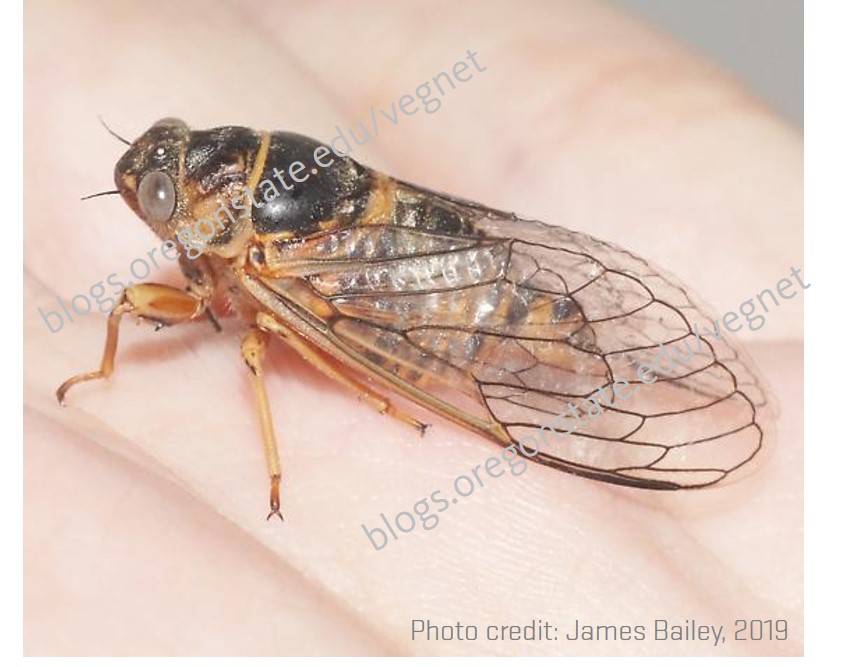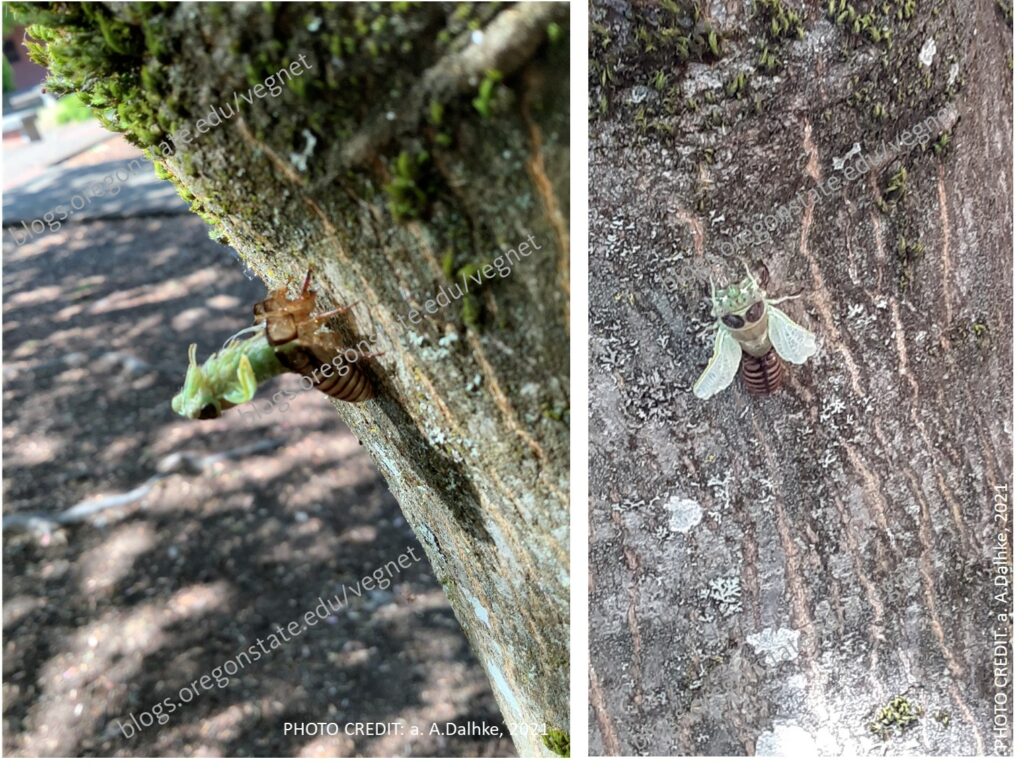Thank you for the opportunity to share in learning with you today! Here are a few resources I mentioned in my talk, feel free to add a comment and keep the discussion going!
Continue readingCategory Archives: community
Happy Nat’l Ag Day!
Did you know? Last year, the value of utilized production in Oregon was $22.5mil for sweet corn and $20.2mil for snap beans! And together, ID/WA/OR account for 50% of the national utilized production of onions. Check out the new publication re: Economic Pests of Onion – available here.

If you know my boss…
You might know that he has contributed over 30 years of expertise to the vegetable industry!! In his honor, our local commission has set up a Go Fund Me page to help with travel funds. Details below but SHHH – it’s a surprise 🙂
Continue readingAlternatives to Chlorpyrifos – 2nd survey
NEW!
Do you grow Asparagus, Beans, Chickpeas, or any other minor/specialty crop of the alphabet? If so.. it’s YOUR TURN to provide input about the recent regulation of chlorpyrifos and how it will affect your production. Sorry, no gift card for this one, but YOUR VOICE IS IMPORTANT!
This survey is VERY SHORT (5 questions total!) and responses remain anonymous. Please consider filling out the survey, regardless of your perceived impact – we need to hear from everyone!
Thank you – Dani Lightle and Jessica Green
Please use the link below to CONTRIBUTE FOR: minor crops
Attitudes about bees vs. wasps
Three years ago, my field season was so affected by yellowjackets (FIG. 1) that I decided to find out what I could learn about them. Their abundance, activity, what influences populations, etc. It was actually harder than I thought to find information! This was noted by a 2018 paper , where the team investigated 908 published papers over almost 40 years and yep – less than 3% of them were wasp-related (FIG. 2).
Continue reading“Despite the importance of both taxa, bees are universally loved whilst wasps are universally despised.”
Seirian Sumner et al., 2018
Alternatives to Chlorpyrifos: Research Surveys
NEW!
Do you grow Asparagus, Beans, Chickpeas, or any other minor/specialty crop of the alphabet? If so.. it’s YOUR TURN to provide input about the recent regulation of chlorpyrifos and how it will affect your production. Sorry, no gift card for this one, but YOUR VOICE IS IMPORTANT! This survey is VERY SHORT (5 questions total!) and responses remain anonymous. Please consider filling out the survey, regardless of your perceived impact – we need to hear from everyone! Thank you – Dani Lightle and Jessica Green
Please use the link below to CONTRIBUTE FOR: minor crops
Continue reading
Cicadas: Chorus or Curse?
Another attention-grabber headline this month is the hatch of periodical cicadas in the eastern US. “Brood IX” is a 17-year assemblage that was expected, but there are “stragglers” from other groups of 13-year cicadas that are actually 4 years early. This year is unusual because the groups consist of many different species (all in genus Magicicada) and appear to be overlapping geographically. Confused yet? Me too, so I refer you to http://magicicada.org/magicicada/ if you’re interested.
Sounds are produced by specialized structures called tymbals, and can exceed 100 decibels! If you’ve never been lucky(?) enough to hear one, enjoy this video clip:
- Cicadas are not ‘locusts’ ( which are a behavioral adaptation of grasshoppers). They’re more closely related to leafhoppers and spittlebugs.
- Common cicadas have life cycles between 3 and 5 years. Nymphs (immatures) live underground and feed on tree roots.
- If you see a green cicada, it is not a periodical species.
- Emergence in the PNW may be related to rainfall: Chatfield-Taylor, W. and Cole, J.A. 2017. Living rain gauges: cumulative precipitation explains the emergence schedules of California protoperiodical cicadas. Ecology 98: 2521-2527.

We do, in fact, have cicadas in Oregon, but they do not occur at nuisance levels. There are ~ 30 species in our region; one of the most encountered is Okanagana oregona (pictured at right).
2021
News & Updates re: Brood X
- ARTICLE A great summary by the Entomological Society of America re: Brood X impact, coverage by media, tracking apps, interviews with leading experts, and even a music video! Aug 12, 2021, ESA
- VIDEO (00:02:30) Great quality footage and overview, and a University of MD. Emeritus professor describing them as ‘delightful‘. SOURCE: May 17 2021, Reuters
- One of my favorite other ‘hats’ is being an Entomology educator for K-5 and guest speaker for Education students who are doing their teaching practica. I was serving in this role last week, and thought I should mention cicadas to the kids, just in case. The morning after our Zoom visit, the teacher sent this picture of a newly eclosed cicada they spotted on a tree. Great catch, Little Wolverines, and I’m so proud of you for being observant!!

OACFA resource list
Thank you for the opportunity to present at your seminars this year. The following is a short list of some of the IPM resources I mentioned during my talk. Thanks for your interest.
- IPM CONCEPTS & THEORY
- Stenberg, J.A., A Conceptual Framework for Integrated Pest Management. Trends in Plant Science, 2017. 22(9): p. 759-769.
- Surendra K Dara, The New Integrated Pest Management Paradigm for the Modern Age, Journal of Integrated Pest Management, Volume 10, Issue 1, 2019, 12, https://doi.org/10.1093/jipm/pmz010
- http://ipmimpact.ucanr.edu: Getting_Started_with_Adoption
- AVOIDING RESISTANCE
- AGENCIES / INFO
They’re boxelder bugs
We have received many emails this week about ‘home invasions’ of odd-looking bugs. In each case, the culprits were boxelder bugs. Although easily recognized as adults, the partially mature phase (nymphs) can be unfamiliar.
Nymphs and adults aggregate in large groups, especially on light-colored homes with a warm-facing side. The concern for damage on ornamental or fruit trees is low. Rather, these are considered a nuisance pest. The sheer and sudden numbers of them is what causes calls to come in.
FOR MORE INFO:
https://pnwhandbooks.org/node/6798/print
http://ipm.ucanr.edu/PMG/PESTNOTES/pn74114.html


Caution for cole crop plantings
Over the past few days, I have seen 300+ cabbage looper moths in traps next to fields that aren’t even out of the ground yet, and been texted twice about flea beetle damage. It seems it will be a busy year for brassica pests!

All the more reason to subscribe! Stay informed by clicking here. We do not share your information, and many of the pests we report on have wide host ranges, which means the data are relevant for home gardens, nurseries, and many commodity crops.
An example pest report can be seen here: https://mailchi.mp/f504f1497d5b/pest-report-week-4
Update: May 16th